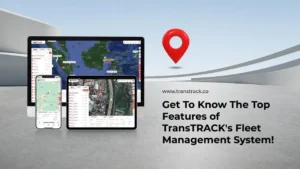Find Out the Various Types of Car Transmissions!
Posted on October 24, 2023 by Nur Wachda Mihmidati

Car transmission is a system that regulates how engine power is distributed to the wheels of a car. In general, transmission is used to convert the engine’s torque and rotational speed into the appropriate torque and speed needed to move the vehicle.
Car transmissions come in two main types: manual and automatic. A manual transmission requires the driver to operate the clutch and manually shift gears to change gear ratios and produce the necessary changes in torque and speed to move the car. In contrast, an automatic transmission handles all of these functions automatically, without the need for driver intervention.
When a driver presses the gas pedal, the power from the engine is transformed by the transmission into lower but more enduring power, allowing the car to achieve the desired speed. Meanwhile, the transmission also enables the driver to select lower or higher gear ratios, depending on the driving conditions they encounter.
What Are the Types of Car Transmissions?
Each type of transmission has its own advantages and disadvantages, and the choice of the right transmission type depends on the driver’s preferences and needs. There are several types of car transmissions, including:
Manual Transmission
Manual transmission is a type of transmission in which the driver must operate the clutch and manually shift gears to change gear ratios and produce the necessary changes in torque and speed to move the car.
Advantages of Manual Transmission
The advantages of manual transmission include:
- Greater efficiency in generating power and speed because there is no power loss caused by electronic components, as is the case with automatic transmissions.
- Provides the driver with full control over the vehicle, resulting in a more engaging and enjoyable driving experience.
- Maintenance and repair costs tend to be lower because manual transmissions have fewer components and do not require complex electronic repairs.
Disadvantages of Manual Transmission
However, there are some disadvantages to manual transmission, including:
- Requires skill and experience to operate the clutch and shift gears, necessitating the driver to learn and practice.
- In heavy traffic conditions, manual transmission can be more tiring for the driver due to frequent clutch engagement and gear shifting.
Conventional Automatic Transmission (AT)
Conventional automatic transmission (AT) is a type of transmission in which gear changes are automatically performed by the transmission system based on speed and engine load.
Advantages of Conventional Automatic Transmission (AT)
The advantages of conventional automatic transmission include:
- Ease of operation because there is no need to operate the clutch and manually shift gears.
- Provides a comfortable driving experience because automatic transmissions produce smooth gear changes without a “shock” sensation during gear shifts.
Disadvantages of Conventional Automatic Transmission (AT)
However, there are some disadvantages to conventional automatic transmission, including:
- More expensive to purchase and repair due to the presence of more electronic components and complex mechanical devices.
- Less efficient in generating power and speed due to power losses caused by mechanical and electronic components within the transmission.
Continuous Variable Transmission (CVT)
Continuous Variable Transmission (CVT) is a type of transmission in which there are no fixed gears; instead, it uses a belt and pulley system to continuously adjust gear ratios.
Advantages of Continuous Variable Transmission (CVT)
The advantages of CVT transmission include:
- Provides smooth acceleration without a “shock” sensation during gear changes because there are no fixed gears.
- More efficient in generating power and speed because there are no power losses caused by mechanical components, as in conventional automatic transmissions.
Disadvantages of Continuous Variable Transmission (CVT)
However, there are some disadvantages to CVT transmission, including:
- Does not provide the driver with full control over the vehicle, resulting in a less engaging driving experience compared to manual transmission.
- Occasionally, non-smooth gear changes can occur with CVT transmissions.
Dual Clutch Transmission (DCT)
Dual Clutch Transmission (DCT) is a type of automatic transmission where two clutches are used to shift gears automatically.
Advantages of Dual Clutch Transmission (DCT)
The advantages of DCT transmission include:
- Provides quick and smooth gear shifts because two clutches allow the preparation of the next gear before the current one is released.
- More efficient in generating power and speed due to fewer power losses compared to conventional automatic transmissions.
Disadvantages of Dual Clutch Transmission (DCT)
However, there are some disadvantages to DCT transmission, including:
- It is more expensive compared to conventional automatic transmissions because it has more advanced components and technology.
- Repairs and maintenance tend to be more expensive due to the presence of advanced components and technology.
Automated Manual Transmission (AMT)
Automated Manual Transmission (AMT) is a type of transmission that combines manual transmission features with electronic control. AMT has an automatic clutch operation and gear-shifting system.
Advantages of Automated Manual Transmission (AMT)
The advantages of AMT transmission include:
- Less expensive compared to conventional automatic transmissions because it has fewer electronic components and mechanical devices.
- Provides drivers with comfort in driving as there is no need to operate the clutch and shift gears manually.
Disadvantages of Automated Manual Transmission (AMT)
However, there are some disadvantages to AMT transmission, including:
- Gear shifts can feel less smooth and slower compared to conventional automatic transmissions.
- Less efficient in generating power and speed compared to manual transmission because it still has power losses caused by electronic and mechanical components.
Direct Shift Gearbox (DSG)
Direct Shift Gearbox (DSG) is an automatic transmission developed by the Volkswagen Group. DSG combines technology from both manual and automatic transmissions by adopting the same dual-clutch design as DCT.
Advantages of Direct Shift Gearbox (DSG)
The advantages of DSG transmission include:
- Offers quick and smooth gear shifts using a dual-clutch system and can shift gears automatically.
- More efficient in generating power and speed with fewer power losses compared to conventional automatic transmissions.
Disadvantages of Direct Shift Gearbox (DSG)
However, there are some disadvantages to DSG transmission, including:
- More complex and expensive compared to conventional automatic transmissions due to advanced components and technology.
- Requires more intensive and expensive maintenance due to the presence of advanced components and technology.
Conclusion
Every type of car transmission has its own advantages and disadvantages. Choosing the right transmission type depends on the driver’s preferences and needs. If you are seeking comfort and ease in driving, then a conventional automatic or CVT transmission may be suitable for you. However, if you prefer an engaging driving experience and want to save on fuel, then a manual or DCT transmission could be the right choice.
In maintaining the optimal performance of your car’s transmission, good management and monitoring are essential. One way to facilitate this management and monitoring is by using the Vehicle Maintenance System from TransTRACK. With this system, car owners can monitor the condition of their car’s transmission in real-time and receive notifications when there is damage or maintenance required.
Don’t hesitate to try TransTRACK‘s Vehicle Maintenance System and experience the benefits it offers in keeping your car’s transmission performance in top shape!
Recent Post
Topic :
 Bahasa Indonesia
Bahasa Indonesia









